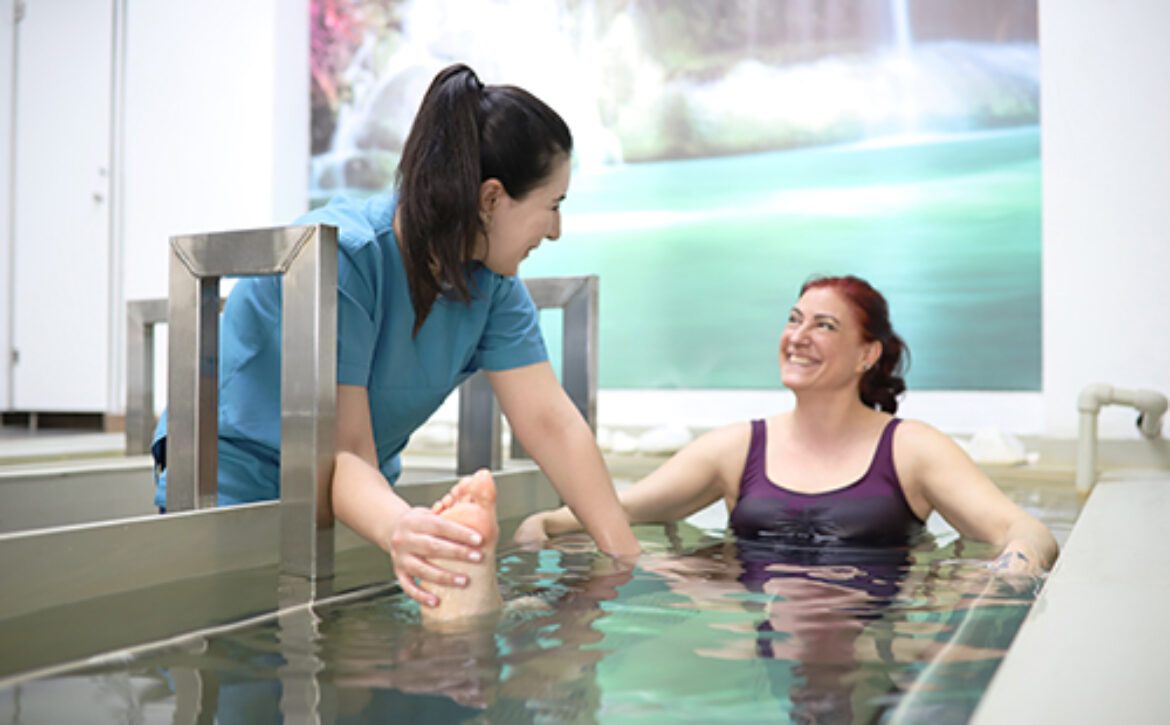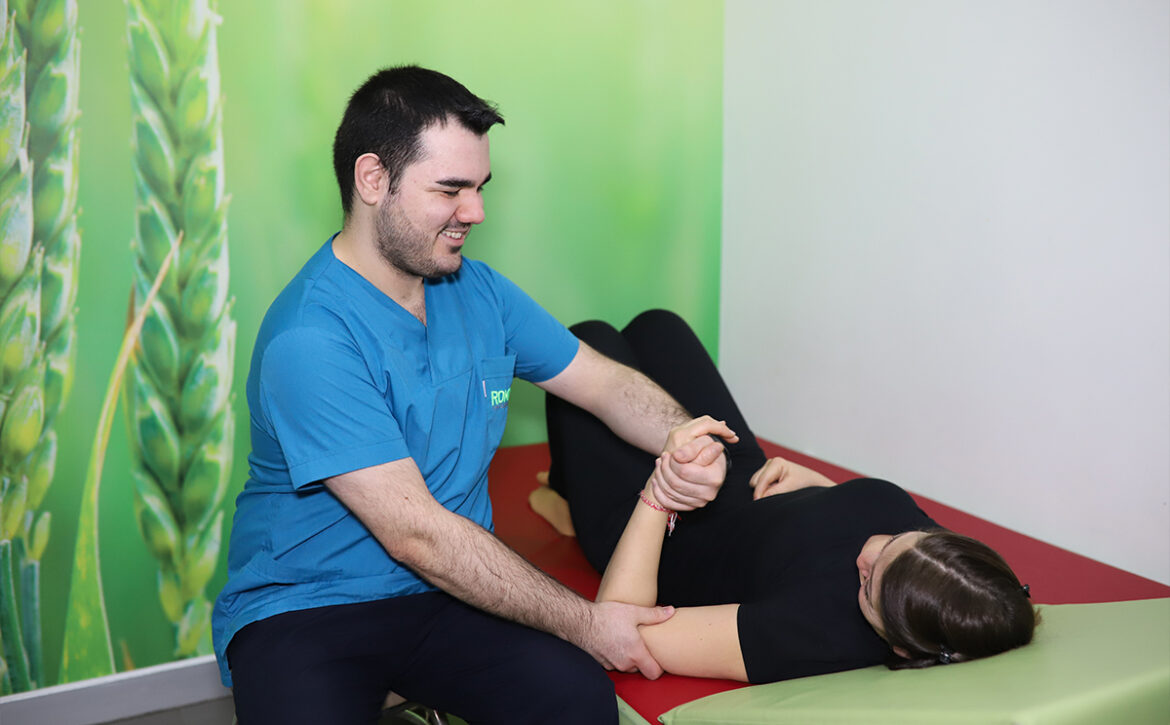Aquatherapy / Hydrotherapy
HYDROTHERAPY (ACUATIC REHABILITATION)
What is Hydrotherapy?
Hydrotherapy (pool therapy) is a method of treating diseases and functional losses by taking advantage of the physical properties of water. Water is one of the oldest methods used for physical therapy. The heat and hydrostatic properties of the water are utilized. With the help of the buoyancy of water, the load carried by the body is reduced, thus it is possible to perform movements that cannot be done normally or that cause a lot of pain while doing it.
What are the benefits of hydrotherapy?
- It plays an important role in reducing pain and sensitivity
- It increases joint movements and helps muscles relax.
- It helps to develop respiratory muscles and the body starts to use oxygen more efficiently.
- It increases muscle strength and endurance by using the resistance property of water
- Difficult and tiring exercises that cannot be done outside of the water become simple and fun, and the self-confidence and motivation of the patient who can perform the movements more easily increases.
- Due to the less effect of gravity in water, it accelerates healing and the healing process of some diseases.
- It prevents excessive load on the person’s muscles and movements are made easier.
- It helps to activate the lymph system.
- It helps to control edema.
Hydrotherapy applications in neurological diseases
In patients with spinal cord injuries, standing and walking activities and some exercises may cause excessive load on the joints and injuries due to the lack of muscle strength. These exercises can be done more comfortably and safely by using the buoyancy of the water. Again, thanks to the buoyancy of the water, standing and walking activities that are hard on dry ground can be done more easily and it is beneficial in increasing muscle strength.
In diseases such as hemiplegia (stroke), MS (Multiple Sclerosis), activities performed with difficulty on dry ground due to contractions can be performed more easily with the relaxation effect of the muscles provided in water.
Hydrotherapy applications in orthopedic diseases
After orthopedic surgeries, especially in cases where it is inconvenient to give weight to the joint immediately, hydrotherapy applications can be used because the load on the joint is less. Since the exercises performed outside the water during rehabilitation can be challenging for the person, more comfortable exercise can be done by taking advantage of the buoyancy effect of the water in the pool.
What are the main diseases for hydrotherapy?
- Cerebral Palsy
- Multiple Sclerosis (MS)
- Muscular Dystrophy,
- Guillan Barre Syndrome,
- Musculoskeletal System Injuries,
- Stroke – paralysis
- Spinal Cord Injuries
- Joint Injuries,
- After Fractures and Surgical Procedures,
- Fibromyalgia
- Rheumatic Diseases
- Sports Injuries
- Soft Tissue Injuries,
- Obesity
- Osteoarthritis (Calcification)
- Balance Problems,
- Polio
How is hydrotherapy applied in ROMMER?
In our center, the hydrotherapy application is personally planned after the examination of the specialist physician and applied individually in the presence of a physiotherapist. Since thermal water is used in the pool in our center, the effect of these healing waters is also benefited. Hydrotherapy application is very beneficial for mobilization in diseases such as cerebral palsy and stroke (paralysis) and contributes to the success of rehabilitation.


